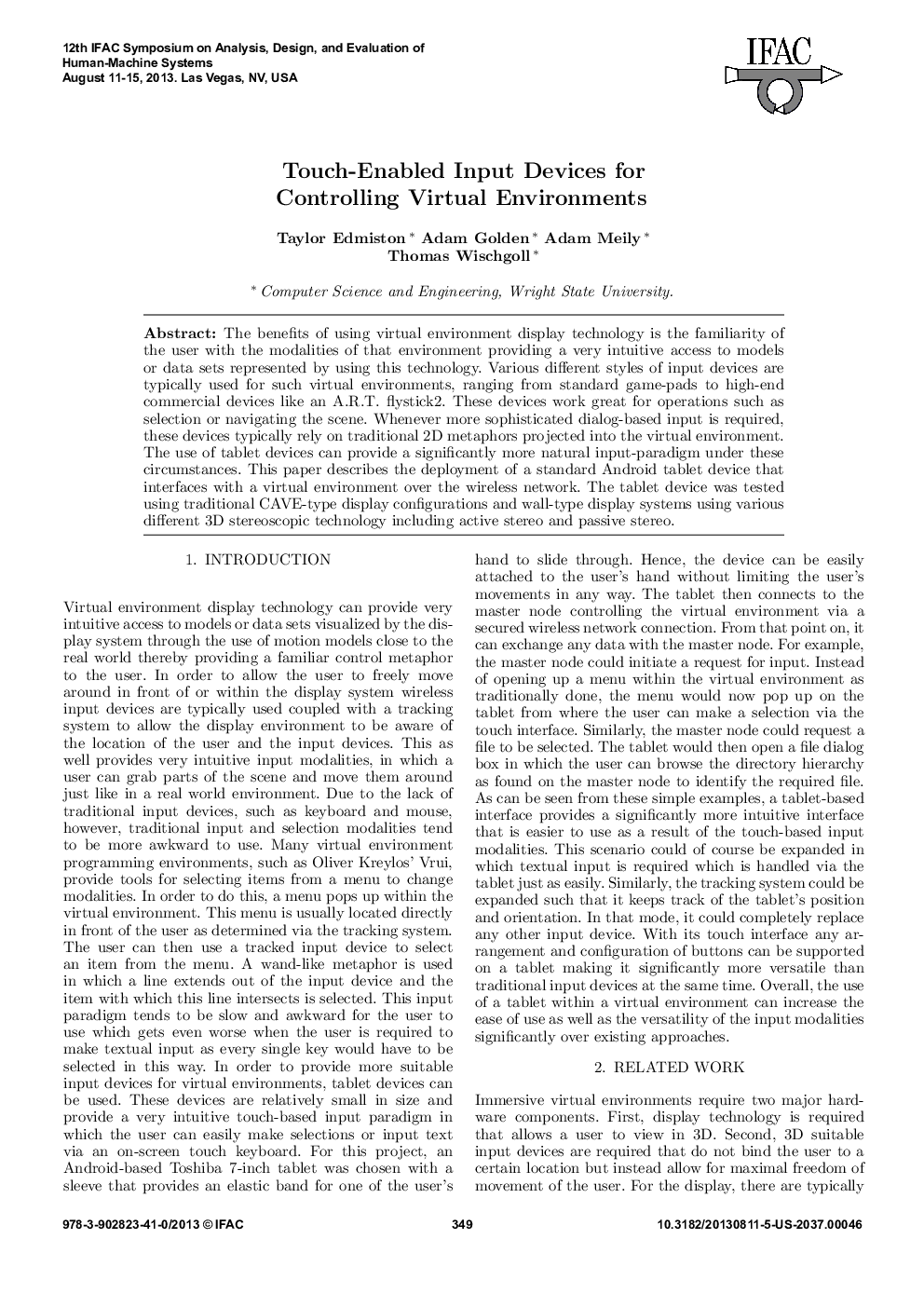| کد مقاله | کد نشریه | سال انتشار | مقاله انگلیسی | نسخه تمام متن |
|---|---|---|---|---|
| 716271 | 892218 | 2013 | 8 صفحه PDF | دانلود رایگان |

The benefits of using virtual environment display technology is the familiarity of the user with the modalities of that environment providing a very intuitive access to models or data sets represented by using this technology. Various different styles of input devices are typically used for such virtual environments, ranging from standard game-pads to high-end commercial devices like an A.R.T. flystick2. These devices work great for operations such as selection or navigating the scene. Whenever more sophisticated dialog-based input is required, these devices typically rely on traditional 2D metaphors projected into the virtual environment. The use of tablet devices can provide a significantly more natural input-paradigm under these circumstances. This paper describes the deployment of a standard Android tablet device that interfaces with a virtual environment over the wireless network. The tablet device was tested using traditional CAVE-type display configurations and wall-type display systems using various different 3D stereoscopic technology including active stereo and passive stereo.
Journal: IFAC Proceedings Volumes - Volume 46, Issue 15, 2013, Pages 349-356